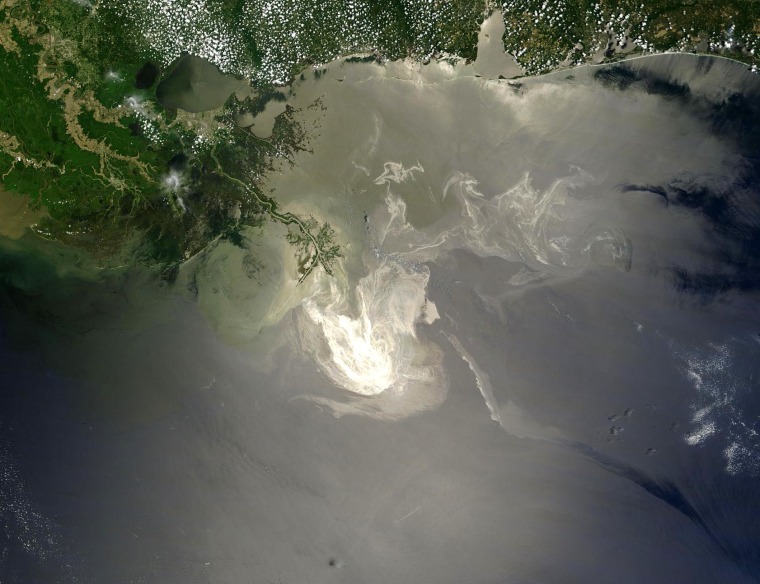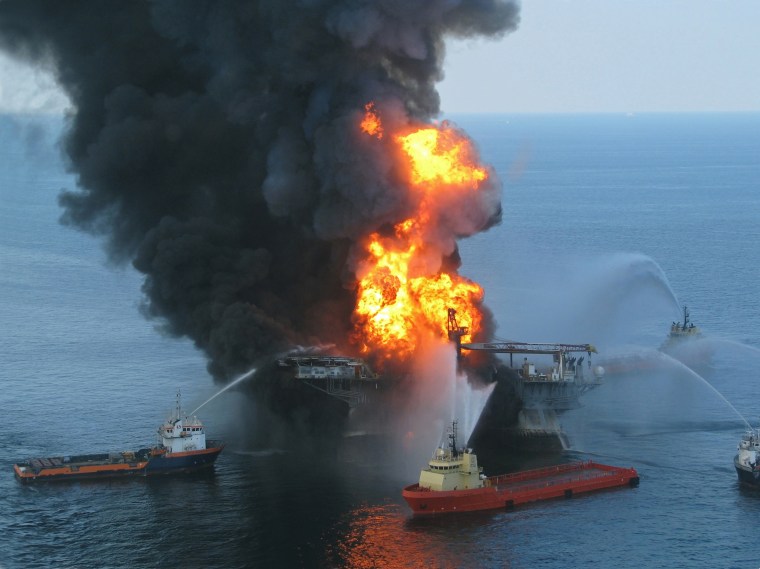On April 20, 2010, an explosion on the Deepwater Horizon caused the oil rig to sink down into the Gulf of Mexico, leaking more than three million barrels of crude oil over four months. The spill off the coast of Mississippi was the largest in United States history, and seven years later, the National Resource Damage Assessment (NRDA) is still determining the extent of its contamination.
In the last 50 years, there have been at least 44 such oil spills of more than 10,000 barrels in U.S. waters. Innovations are imperative to prevent similar damage to the ocean like the kind inflicted by Deepwater Horizon, but new measures to solve these unnatural disasters aren't yet able to keep up.
The Coast Guard, which is responsible for overseeing emergency response during these events, uses three main methods to clean spilled oil: booming and skimming, in situ burning, and chemical dispersion.
These techniques are designed to remove oil from the water's surface, but become ineffective if the oil sinks. They can also be harmful to the environment and the wildlife, making efficient detection and a quick response more important during cleanup. But new methods in development could make the process cheaper, more efficient, and easier for emergency response teams.
Early Detection
Researchers at the Universidade de Vigo in Spain are working on linking a system of buoys with small sensors that are able to remotely monitor areas of the coastline. These buoys help scientists quickly detect oil if it enters their area and can radio that information back to the team via a transmitter.
“Fast detection of a spill is crucial for a quick antipollution response to avoid, as much as possible, the progressive mixture of the oil into the water, which would make cleaning more difficult and inefficient,” Jose R. Salgueiro, leader of the research team, said in a statement. “Also, knowing the oil type makes possible a more specific response to counteract the pollution.”
To this end, the buoys' light sensors use a configuration of four photodiode detectors to record distinct signals and determine which of five different types of oil is present in the water.

Salgueiro’s invention is inexpensive to produce and can be easily placed in a buoy and then left offshore to monitor specific areas indefinitely. By creating a network of these buoys, researchers could map the spread of spills in real time as sensors in different areas confirm the presence of oil. Without needing to rely on costly aircraft surveillance to track spilled oil, respondents could target their cleanup measures with greater speed and precision.
Cleaning Up
Detecting the spread of an oil spill means little unless that oil can be quickly removed from the water. But the cleanup methods most commonly used by the Coast Guard today can't save the oil for future use, so spills are both damaging to the environment and wasteful of valuable resources.
Seth Darling and a team at the Argonne National Laboratory in Illinois have essentially created a system of large sponges that can be dragged across a slick of oil on the water's surface. The sponges, made up of a polyurethane foam coated with silane molecules, absorb the oil and safely remove it from the water. They can then be wrung out and reused up to 100 times.
Darling's team calculated the silane needed to create a chemical balance, which is attractive enough to absorb oil molecules in the water but not so powerful that it's unable to release the trapped molecules under the correct conditions later.
When dragged behind a crude oil pipe during lab tests, the sponges were able to absorb 90 times their weight in oil before being sent through a wringer. They were reused several times without losing their capacity, cementing their status as a sustainable new way to clean up after a spill.
“In an ideal world, you would have warehoused collections of this foam sitting near wherever there are offshore operations… ready to go when the spill happens,” Darling recently told New Scientist.
New technologies that speed up the response may prevent damage to the coastline and wildlife, and eliminate the loss of vital resources. However, there are still several outstanding questions. More testing is needed to determine how large of an area floating sensors would be able to cover or how to best deploy the absorbent sponge using existing resources.
It will likely be a long while before any of them are incorporated on a large scale. But these innovations show great potential for saving our oceans.
